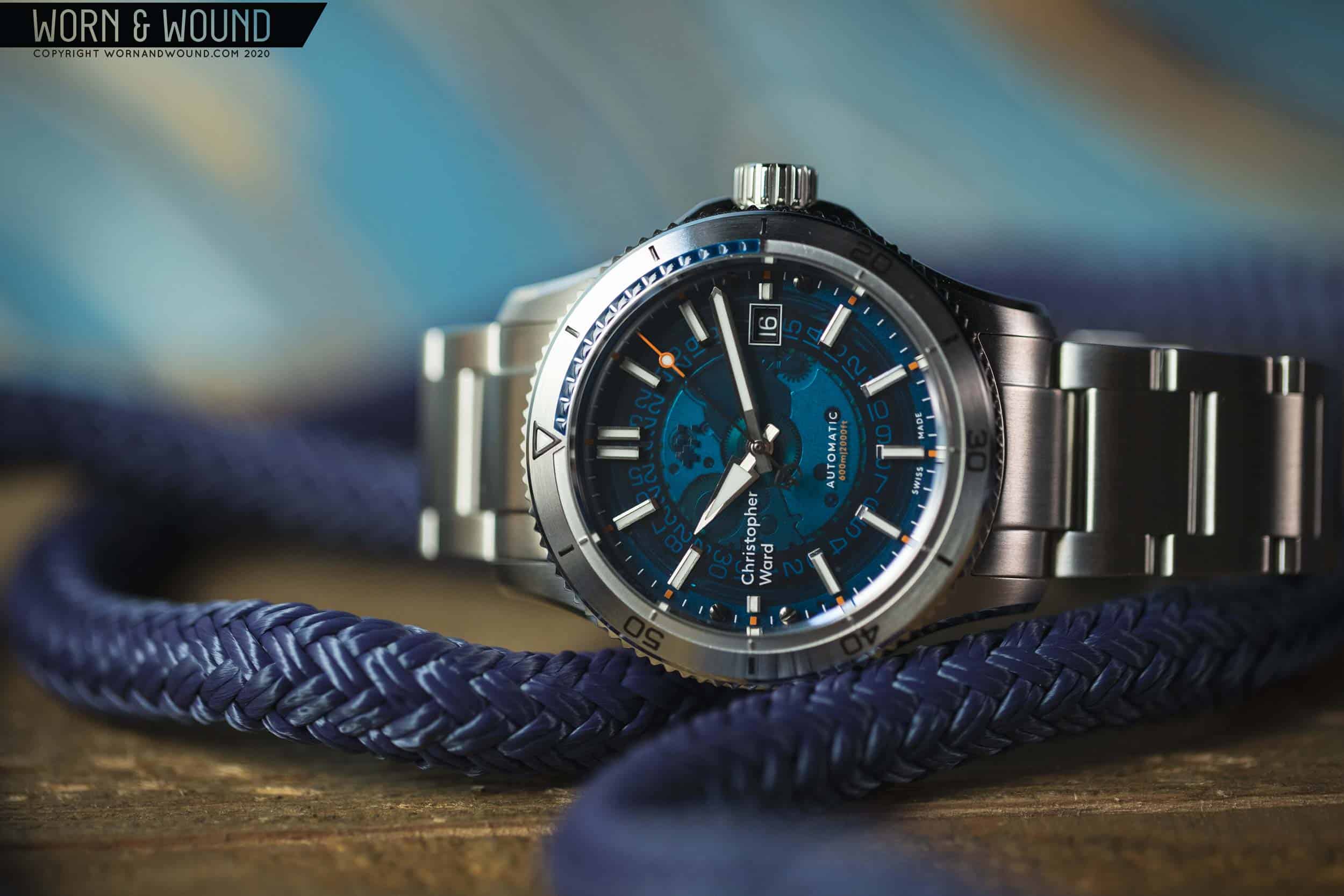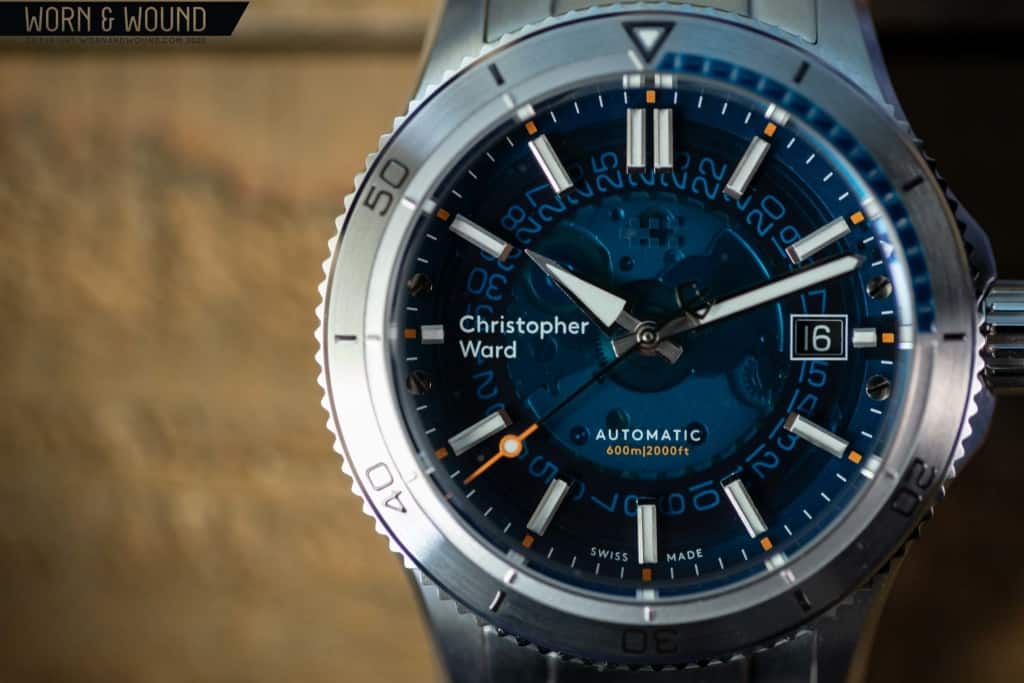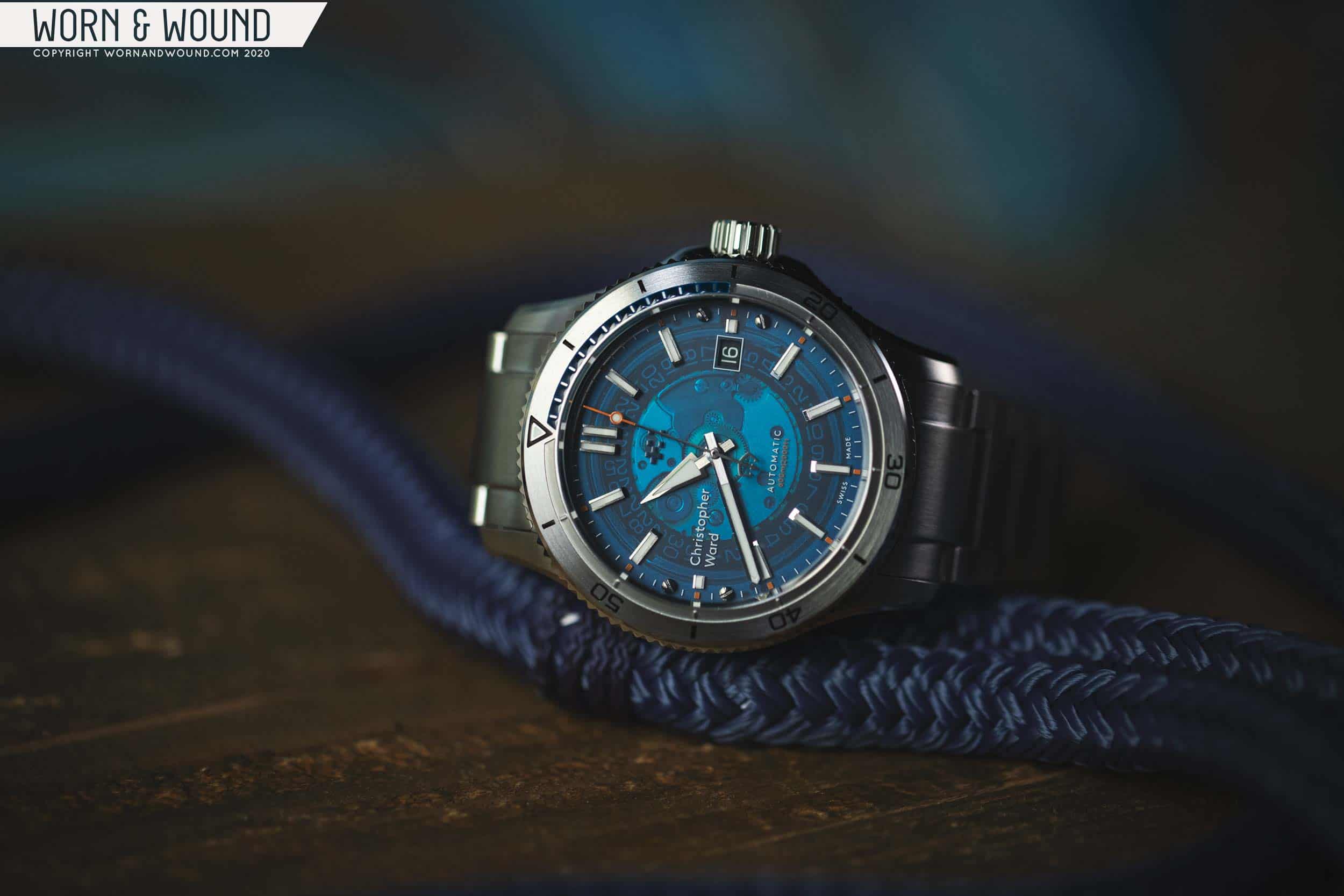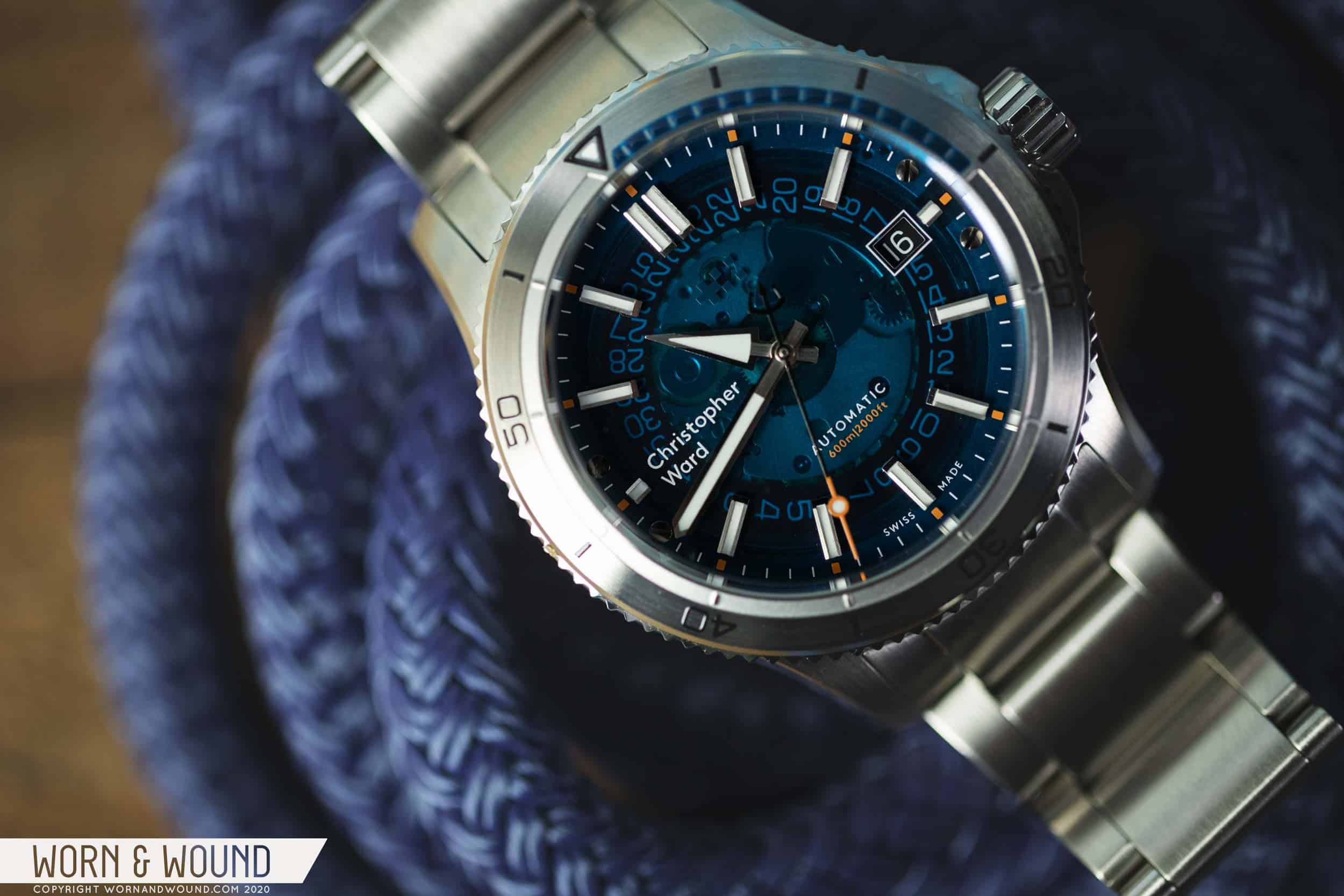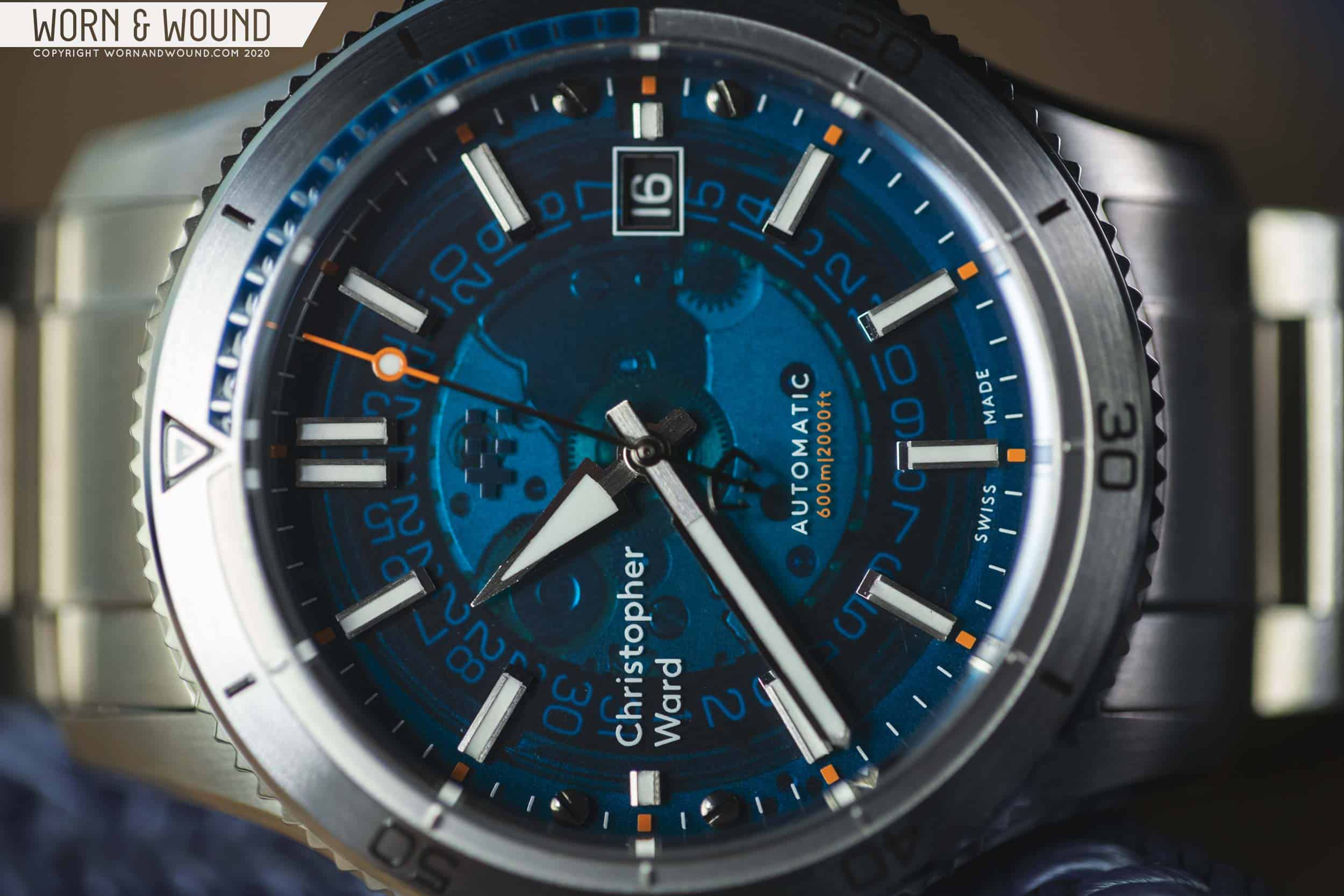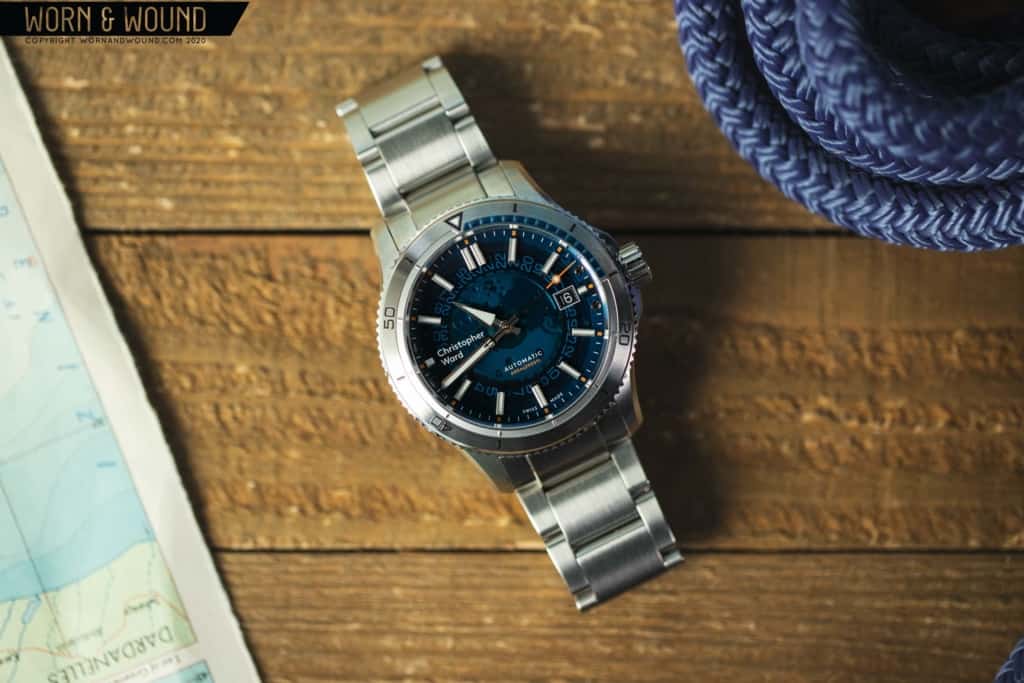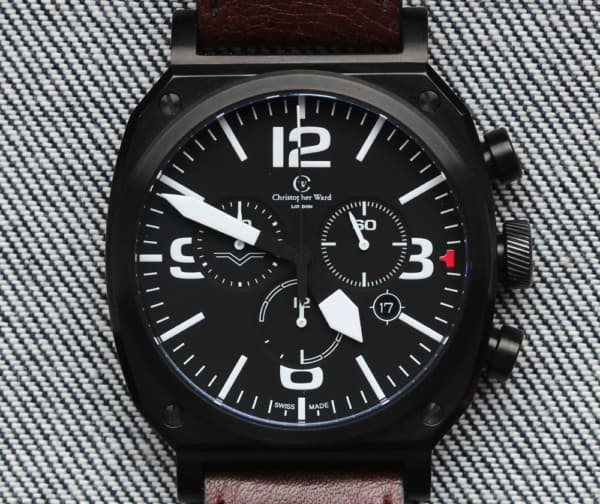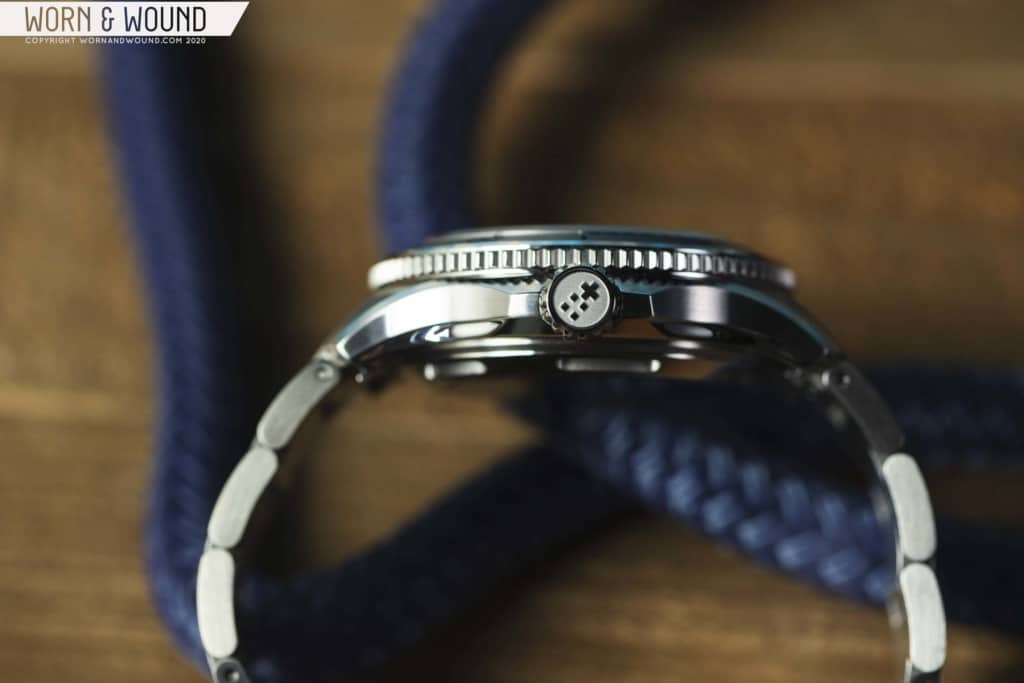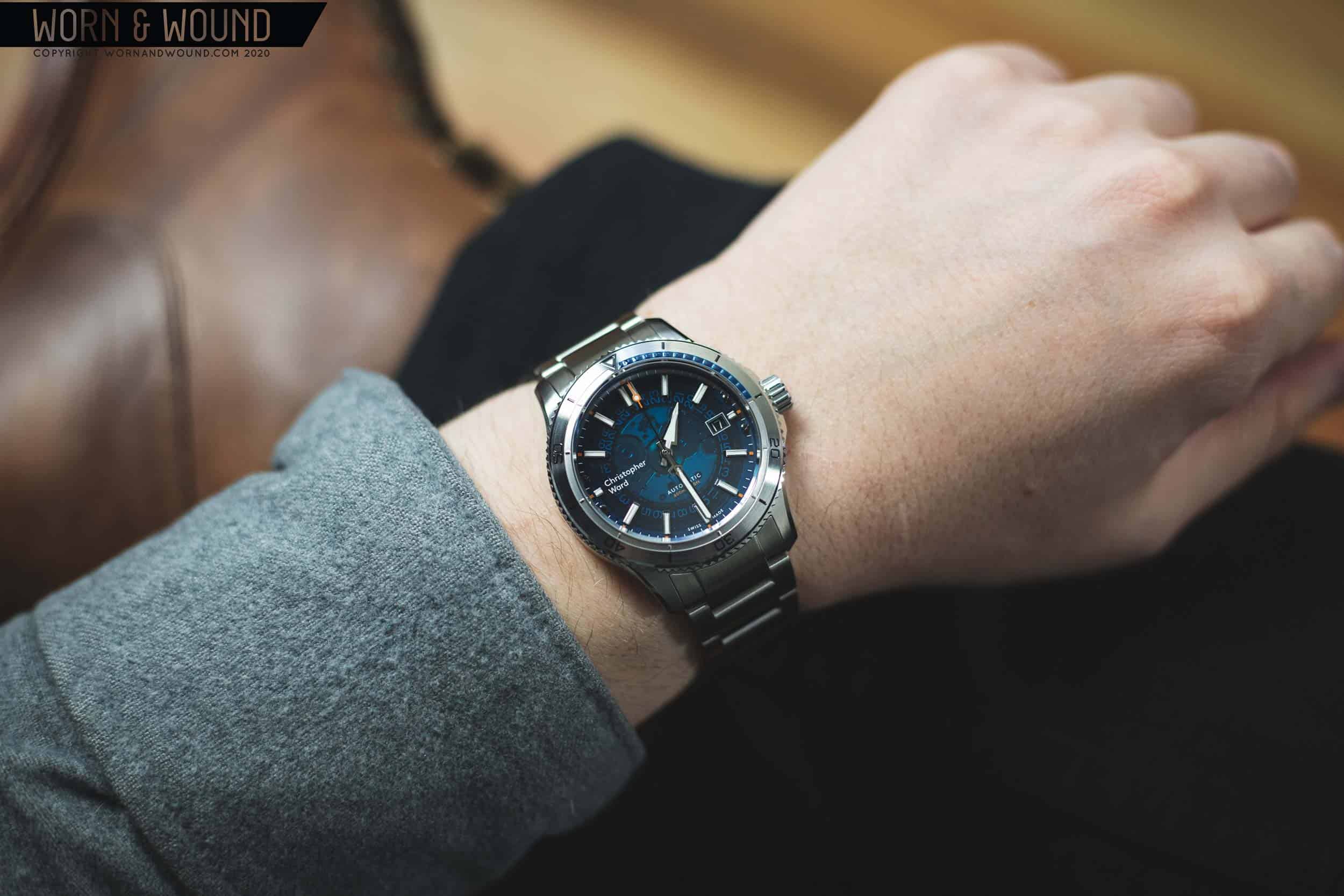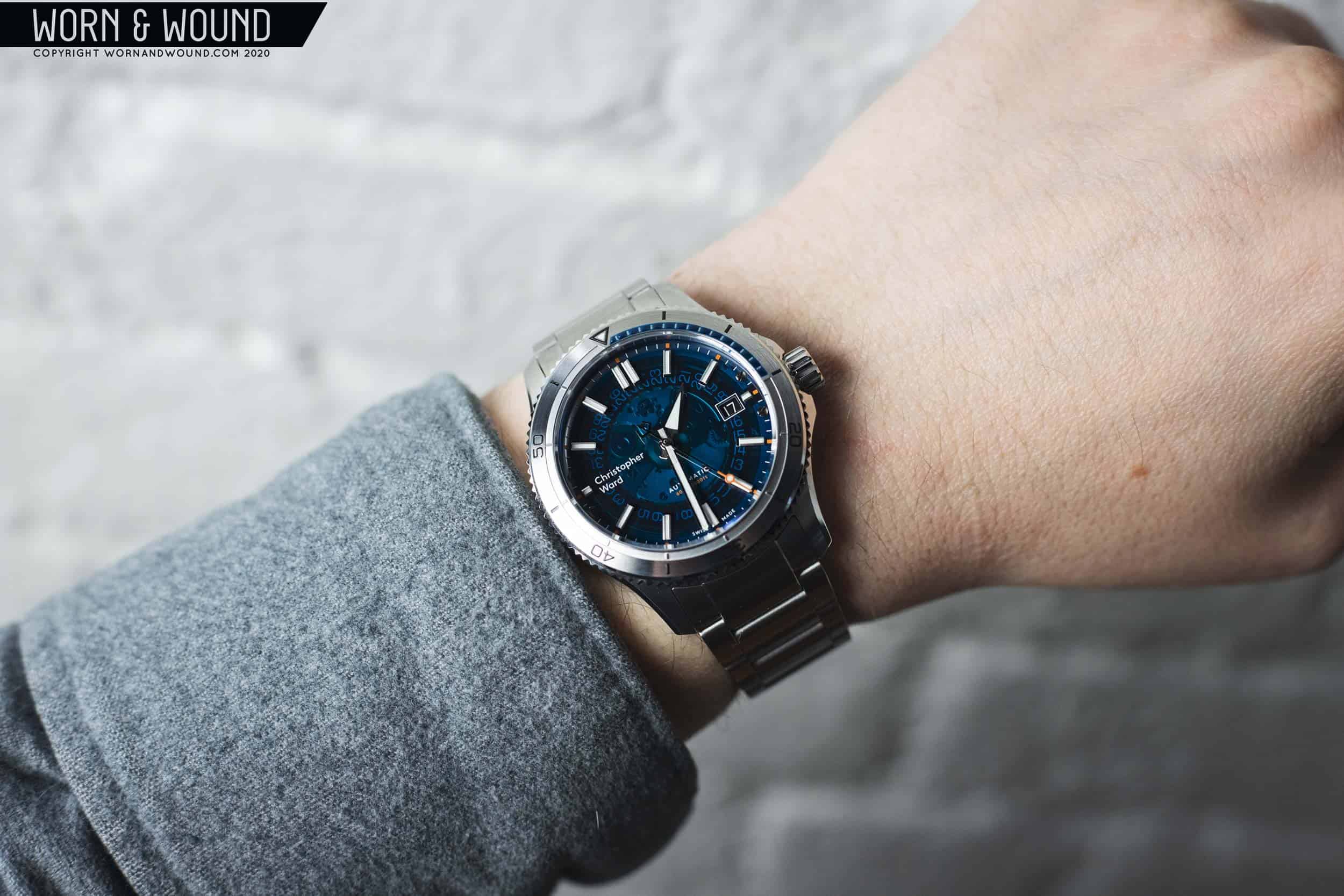The Christopher Ward brand has been on a roll lately. Starting last year with the re-launch of their core modern diver line, the C60 Tridents, they’ve been releasing new watches at a rather fast clip. Ranging from their sublime C1 Moonglow to their line of MoD officially-licensed military chronometers, to their Haute-inspired Apex C60 made in partnership with Armin Strom, to their recent retro-chic C65 GMT with a Worldtimer bezel – and that’s not to forget their souped-up, 1000m titanium C60 Elites – they are moving along at breakneck speed. Today, I’m excited to have the exclusive hands-on opportunity to check out their newest watch, the C60 Sapphire.
Hands-On: Christopher Ward C60 Sapphire
Hands-On: Christopher Ward C60 Sapphire
While there are many reasons to be a fan of the Christopher Ward brand, one semi-abstract reason that has always appealed to me is that they enjoy a good challenge. When you think about their inhouse complications, their 5-day chronometer movement, the level of fit and finish that they can achieve at relatively modest price points, it’s clear they don’t just take the easy path. The C60 Sapphire is a very clear example of this as well. As you can plainly see from the photos, the dial is transparent blue. But rather than being made of plastic or some other easily manipulated material, it’s made of – you guessed it – a .6mm thick sapphire crystal.
Typically the material we find in the crystals over dials, occasionally bezels, and sometimes display backs, it’s rarely the material that makes up dials. And you can probably guess why – it’s expensive and easy to mess up. Machining it for a dial, with the various connection points and apertures a dial requires, takes expertise that not many brands and manufacturers have.
Something I learned while speaking to Mike France, CEO and founding partner of Christopher Ward, for an upcoming podcast interview, is that this isn’t the first time they’ve used sapphire on a dial. That cool, smokey gray surface that comprises the lower half of the C1 Moonglow is sapphire as well. In creating that watch, their manufacturer honed this skill, allowing them to bring it now to the C60, with a price tag starting under $1,000. The result is, as you’d expect, a dial with an appealing depth, bold color, and a hard-to-put-your-finger-on crispness.
Now, let’s get into the watch itself. The C60 Sapphire’s dial features a deep blue tone that pleasantly changes in different intensities of light. When it’s bright, light bounces off of the top-side of the movement behind the crystal, creating a bold, brilliant blue. When it’s dark, the dial can appear nearly black, with a cool glaze, just barely revealing the movement underneath. Dive watches often are designed to emulate and celebrate aspects of water, yet few achieve a natural sensation as effortlessly as the C60 Sapphire, which seems to transition from simulating shallow to deep water throughout the day.
On top of the blue surface are the indexes you’d expect to see on a C60. There are faceted, lume filled applied markers per hour, with a printed index around the edge of the dial in white and orange. “Christopher Ward” is left justified, balancing the date window at three. At 12 is a just-visible version of their twin-flag logo that appears to almost float within the sapphire, while at six you’ll find “Automatic” in white, followed by “600m|2000ft” in orange, reminding you of the watch’s impressive water resistance.
An unexpected surface detail is the four blackened screws found on either side of the sapphire surface. Clearly a functional detail, they add to the appealing, mechanical-focus of the design, which speaks to the sort of obvious, yet easy to overlook dial element: the movement below. Beneath the crystal is a Sellita SW-200. Not typically seen from the top-down, you’ll find a black date disk, various metallic surfaces, as well as some wheels and gears. They aren’t decorated beyond the standard finish, which at first gave me pause, but I later decided was a smart choice as there would have been too much going on with, say, some perlage.
Naturally, having the movement visible adds substantial complexity and texture to the dial, while also increasing the sense of depth created by the blue crystal. Yet, somehow, you can also completely ignore it if you wish, unlike with a skeleton dial. It strikes a nice balance, allowing you to either dig in, find details and enjoy its complexity or to read the watch at a glance without being distracted.
The C60 Sapphire is built on Christopher Ward’s newer 40mm format, which is, as I said in my C60 review, in that Goldilocks zone for a dive watch. Measuring 40mm at the bezel, 47.5mm lug-to-lug, and 13.5mm tall with 20mm lugs, it wears extremely well. It also features their “light-catcher” design, which offers exceptional finishing as well as clever geometry that helps the watch look and wear a little thinner.
While the case has remained the same, the bezel insert features a new and intriguing design that pulls from the C60 Elites. The full-steel insert is radially brushed with a very appealing grain, ending with a polished chamfer that adds a nice pop. There are then inner and outer indexes. The outer features black numerals and markers in a reduced size from other C60s. The inner index is then a thin trench that is etched or machined in, with a matte finish, except for the first 15 minutes, which is an arc of ark blue paint with small steel patches per minute. Somehow, they also managed to lume this arc, giving it a cool look in the dark. I have to say, I love this new layout. It’s modern, technical, appealing and, as far as I can tell, totally unique to the brand.
It was also the right choice to pair with the sapphire dial. A colorful ceramic insert would have been a visual overload. The steel adds texture, brings the eye to the dial, while also playing off the of mechanical-appeal created by seeing the movement. Flipping the watch over, you’ll find a display case back with a dark blue crystal. A nice touch that obviously reflects the dial, it completes the concept and gives you a nice view of their custom rotor.
The C60 Sapphire is available on either a hybrid rubber strap for $920, or a steel bracelet for $1,020. On the bracelet, this watch is a little symphony in steel. Though I’m typically a strap guy, the bracelet really completes the package here, continuing the watch’s cool, metal and glass aesthetic around the wrist. Trying this watch out for a bit I was also reminded by how nice their clasp is, which features a built-in extension that gives you about an extra link of room to play with, in addition to just being rugged and well-made. Naturally, I also threw it on an Admiralty Gray ADPT strap, which played nicely with the cool tones of the sapphire, without overwhelming it, or adding too much color.
The core Christopher Ward C60 Trident Pros are exceptional, affordable, high-spec modern divers, with an intentionally neutral attitude. This isn’t a bad thing. Actually, far from it. They are meant to be everyday watches with widespread appeal, which is what a core watch should be. It also gives Christopher Ward the opportunity to create individual models with unique and bold personalities that take some risks, and therein be more divisive.
The C60 Sapphire is one such watch, and it’s great that they made it. If you had asked me before me showing this watch “hey, do you want a C60 with a transparent blue dial made of sapphire that shows the top-side of the movement?” I might not have said yes. But, here we are, and boy am I glad they made this watch. It’s genuinely different, completely bucks the vintage-trend, and has more than enough personality to appeal to collectors and enthusiasts that want pieces that stand out. So, if you’re like me and are a fan of the C60, but want your watches to have truly unique elements, the Sapphire is the one you’ve been waiting for. Christopher Ward









 Featured Videos
Featured Videos




